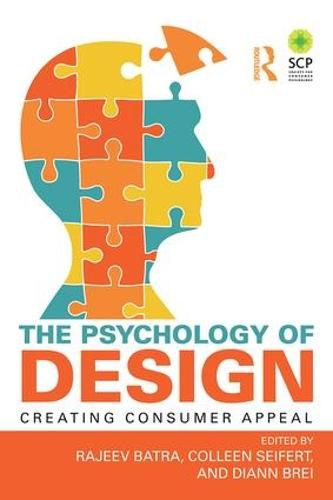Readings Newsletter
Become a Readings Member to make your shopping experience even easier.
Sign in or sign up for free!
You’re not far away from qualifying for FREE standard shipping within Australia
You’ve qualified for FREE standard shipping within Australia
The cart is loading…






Design plays an increasingly larger role today in creating consumer desire for products and liking for commercial messages. However, the psychological processes involved are only partially understood. In addition, design is inherently interdisciplinary, involving (among others) important elements of aesthetics, anthropology, brand strategy, creativity, design science, engineering, graphic design, industrial design, marketing, material science, product design, and several areas within psychology. While researchers and practitioners in all of these fields seek to learn more about how and why good design works its magic, they may benefit from each other’s work. The chapters in this edited book bring together organizing frameworks and reviews of the relevant literatures from many of these contributing disciplines, along with recent empirical work. They cover relevant areas such as embodied cognition, processing fluency, experiential marketing, sensory marketing, visual aesthetics, and other research streams related to the impact of design on consumers. Importantly, the primary focus of these chapters is not on product design that creates functional value for the targeted consumer, but rather on how design can create the kind of emotional, experiential, hedonic, and sensory appeal that results in attracting consumers. Each chapter concludes with Implications for a theory of design as well as for designers.
$9.00 standard shipping within Australia
FREE standard shipping within Australia for orders over $100.00
Express & International shipping calculated at checkout
Design plays an increasingly larger role today in creating consumer desire for products and liking for commercial messages. However, the psychological processes involved are only partially understood. In addition, design is inherently interdisciplinary, involving (among others) important elements of aesthetics, anthropology, brand strategy, creativity, design science, engineering, graphic design, industrial design, marketing, material science, product design, and several areas within psychology. While researchers and practitioners in all of these fields seek to learn more about how and why good design works its magic, they may benefit from each other’s work. The chapters in this edited book bring together organizing frameworks and reviews of the relevant literatures from many of these contributing disciplines, along with recent empirical work. They cover relevant areas such as embodied cognition, processing fluency, experiential marketing, sensory marketing, visual aesthetics, and other research streams related to the impact of design on consumers. Importantly, the primary focus of these chapters is not on product design that creates functional value for the targeted consumer, but rather on how design can create the kind of emotional, experiential, hedonic, and sensory appeal that results in attracting consumers. Each chapter concludes with Implications for a theory of design as well as for designers.